Who wouldn’t want to drink single vineyard Cabernet Sauvignon everyday, or perhaps first growth Burgundy, or even small production Petite Sirah? I for one can raise my hand affirmatively. Most likely I’d go for the Petite Sirah, a weak spot if ever I had one. However most days many folks are looking for something that is both tasty and affordable. With a little bit of research and luck it could, and quite frankly should, be interesting too. That doesn’t sound like a lot to ask, but how does one discern one bottle from another when there are aisles and aisles of wine out there? There are two ways I go in these circumstances; one is the esoteric route, the other is the tried and true. Left to my own devices, I most often lean towards the slightly arcane or obscure, that’s just my nature. I’ll take a chance on something in the value price range and if it doesn’t pan out at least it was an adventure. If others are involved I tend to rein myself in a little bit. I look for something I’m familiar with that I feel has mass appeal. Today I’ll look at two such releases from Big House.
The Big House wines used to reside under Randall Graham’s Bonny Doon label. A number of years ago they were sold off and now Big House is its own label with a portfolio unto itself.
 The 2009 Big House White was produced from fruit sourced at different vineyard sites throughout California. This wine is a blend of Malvasia Bianca (56%), Muscat Canelli (22%), Viognier (18%) and Rousanne (4%). This wine underwent temperature controlled fermentation prior to bottling. This offering has a suggested retail price of $9.99.
The 2009 Big House White was produced from fruit sourced at different vineyard sites throughout California. This wine is a blend of Malvasia Bianca (56%), Muscat Canelli (22%), Viognier (18%) and Rousanne (4%). This wine underwent temperature controlled fermentation prior to bottling. This offering has a suggested retail price of $9.99.
Lychee fruit, papaya and orange blossom aromas are all present in the nose of this wine. Lemon zest, pineapple, mango and a solid core of spice characteristics are all on display throughout the palate. A bit of vanilla bean emerges on the finish of this wine which also has a hint of honey in an overall crisp and zingy close. This wine will be an excellent match for Asian or Indian cuisine. It has lots of crowd pleasing potential and will also work well as a welcome wine.
 The 2009 Big House Red was also produced from fruit sourced throughout California. This offering is a blend of Petite Sirah (27%), Syrah (14.5%), Montepulciano (8.6%), Barbera (8.2%), Nero d’Avola (6.4%), Tempranillo (6.1%) and a host of others in smaller and smaller quantities. This wine underwent temperature controlled fermentation. Some lots underwent malolactic fermentation and barrel aging in primarily neutral oak. This wine has a suggested retail price of $9.99.
The 2009 Big House Red was also produced from fruit sourced throughout California. This offering is a blend of Petite Sirah (27%), Syrah (14.5%), Montepulciano (8.6%), Barbera (8.2%), Nero d’Avola (6.4%), Tempranillo (6.1%) and a host of others in smaller and smaller quantities. This wine underwent temperature controlled fermentation. Some lots underwent malolactic fermentation and barrel aging in primarily neutral oak. This wine has a suggested retail price of $9.99.
Plum aromas abound in the nose of Big House Red. Throughout the palate dark fruit flavors in general are prominent. Raspberry, sour black cherry and blackberry join continued plum characteristics. The finish is spicy with black and white pepper leading the charge. A good amount of earth emerges as well and adds to the old world charm on display. This wine is tasty on it’s own but is a great match for casual foods; burgers, hot dogs, sandwiches and the like are all appropriate pairing partners.
These wines from Big House have been solid values for many years. What separates them from a lot of wines in the same price category is that they’re far more interesting. Part of that is the diversity of the blends, the rest is the winemaking. These offerings are made to be food friendly and have wide appeal, but they aren’t dumbed down like so many in this price range. They're are solid everyday vales the average wine drinker will enjoy.
 When I’m headed to a party, or planning to entertain masses in my home I look for crowd pleasing wines to serve. Left to my own devices I gravitate towards the esoteric; most though want something tasty to drink alongside their sandwich. So in these cases I often seek out blends. They can offer a range of flavors to keep savvier folks interested, and plenty of out front satisfaction for those who just want something that goes down easy. Often times these blends are ones that includes Zinfandel or Syrah. Today I’ll look at one from California that is widely available.
Apothic Red 2008 California Winemaker’s Blend was produced using fruit from vineyards throughout California. This offering is a blend of Syrah, Zinfandel, and Merlot. The alcohol content is a modest 13.1% and this wine is available all over the country for a suggested retail price of $14.
When I’m headed to a party, or planning to entertain masses in my home I look for crowd pleasing wines to serve. Left to my own devices I gravitate towards the esoteric; most though want something tasty to drink alongside their sandwich. So in these cases I often seek out blends. They can offer a range of flavors to keep savvier folks interested, and plenty of out front satisfaction for those who just want something that goes down easy. Often times these blends are ones that includes Zinfandel or Syrah. Today I’ll look at one from California that is widely available.
Apothic Red 2008 California Winemaker’s Blend was produced using fruit from vineyards throughout California. This offering is a blend of Syrah, Zinfandel, and Merlot. The alcohol content is a modest 13.1% and this wine is available all over the country for a suggested retail price of $14.
 First is the Angel’s Secret 2007 Merlot. The fruit for this wine was sourced at vineyards located on the Mayacamus Mountains. This range of mountains runs right between Sonoma and Napa Valley. In addition to Merlot (94%) there is a small amount of Cabernet Sauvignon (6%) blended in as well. Barrel aging occurred over 20 in a combination of new, (40%) and used, (60%) French, (90%) and American (10%) oak. Just fewer than 800 cases of this Merlot were produced and it has a suggested retail price of $16.99.
First is the Angel’s Secret 2007 Merlot. The fruit for this wine was sourced at vineyards located on the Mayacamus Mountains. This range of mountains runs right between Sonoma and Napa Valley. In addition to Merlot (94%) there is a small amount of Cabernet Sauvignon (6%) blended in as well. Barrel aging occurred over 20 in a combination of new, (40%) and used, (60%) French, (90%) and American (10%) oak. Just fewer than 800 cases of this Merlot were produced and it has a suggested retail price of $16.99.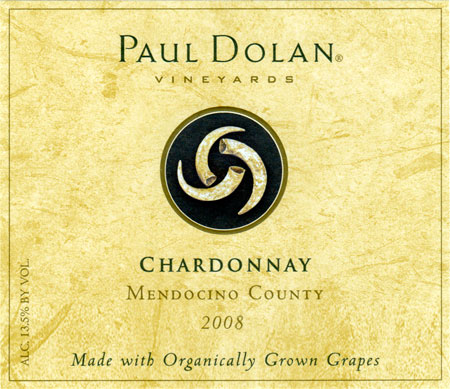 The Paul Dolan Vineyard 2008 Chardonnay was produced entirely from Mendocino County fruit. Fruit was sourced from two vineyards, each planted in the early 1970’s. This wine is 100% varietal. 20% of the wine underwent oak barrel aging for 8 months; the remaining 80% was aged in stainless steel. 3,080 cases of this offering were produced and it has a suggested retail price of $18.
The Paul Dolan Vineyard 2008 Chardonnay was produced entirely from Mendocino County fruit. Fruit was sourced from two vineyards, each planted in the early 1970’s. This wine is 100% varietal. 20% of the wine underwent oak barrel aging for 8 months; the remaining 80% was aged in stainless steel. 3,080 cases of this offering were produced and it has a suggested retail price of $18.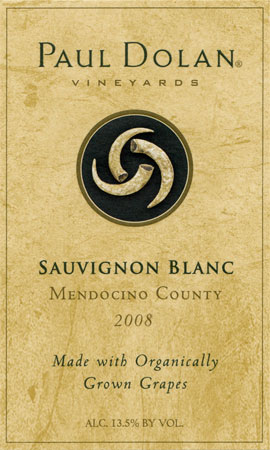 The Paul Dolan Vineyards 2008 Sauvignon Blanc was produced using fruit from two neighboring vineyards located at the headwaters of the Russian River in Mendocino County. This offering is 100% Sauvignon Blanc; it was both fermented and aged in stainless steel. 1,260 cases of this wine were produced and it has a suggested retail price of $18.
The Paul Dolan Vineyards 2008 Sauvignon Blanc was produced using fruit from two neighboring vineyards located at the headwaters of the Russian River in Mendocino County. This offering is 100% Sauvignon Blanc; it was both fermented and aged in stainless steel. 1,260 cases of this wine were produced and it has a suggested retail price of $18.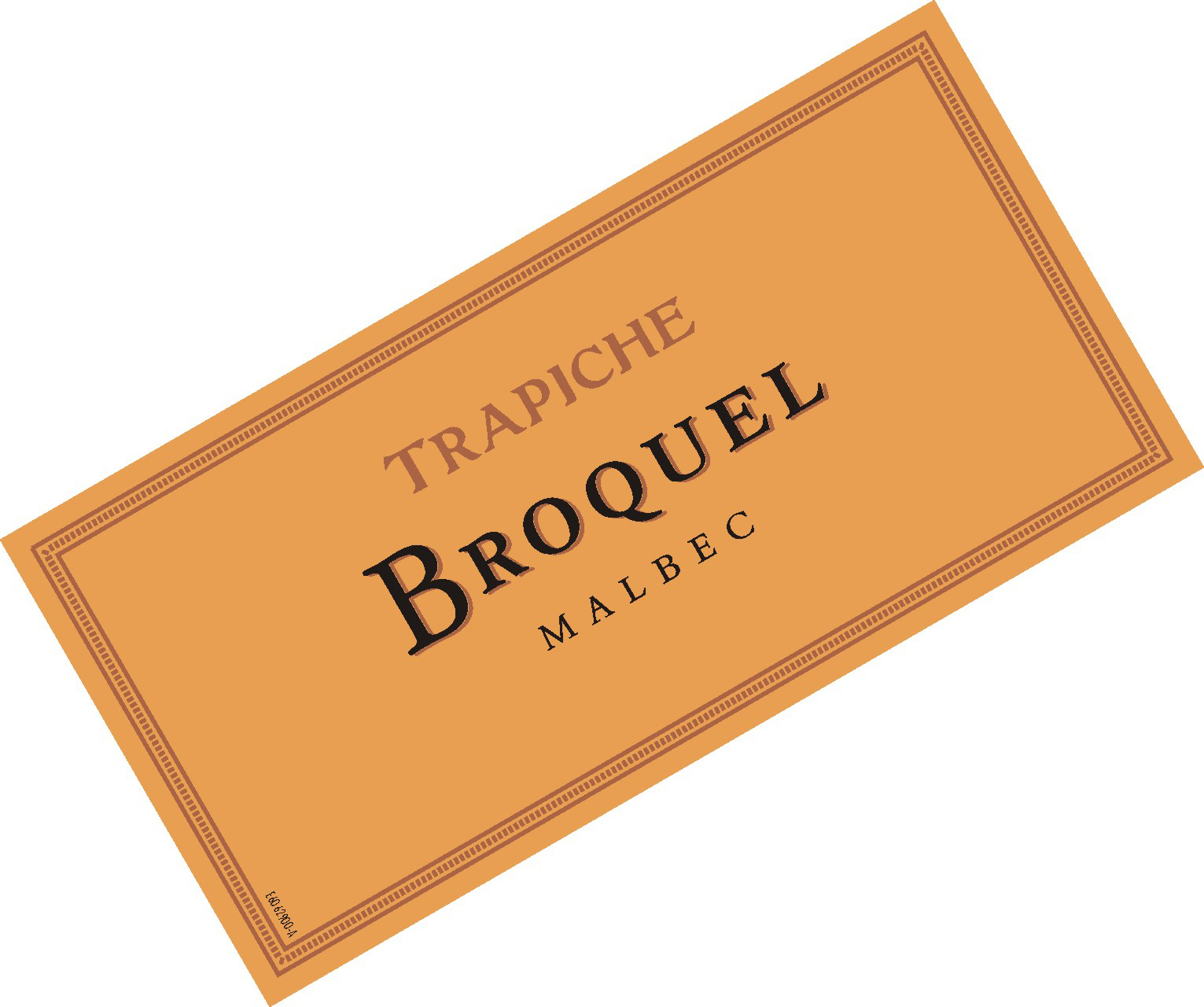 Malbec has entered a phase in this country were most wine drinkers are well aware of it and more than likely have also tasted it. Many people drink it regularly as it’s become a go to choice for a lot of folks. And with it’s easy to like characteristics it’s easy to see why. But most of the Malbec people are drinking leans towards one style; wines whose most prominent feature is juicy up front fruit. Nothing wrong with that if you like it and there are bargains to be bad. But there are many other faces to Malbec. Today I’ll look at one from Trapiche.
The Trapiche 2008 Broquel Malbec was made from fruit sourced at vineyards with 25 years of age on them. These vines sit between 900 and 1,200 meters above sea level. This wine is 100% Malbec. Fermentation took place in concrete vats over a period of 25 days. Barrel aging followed over 15 months in a combination of French and American oak. This wine has a suggested retail price of $18.
Malbec has entered a phase in this country were most wine drinkers are well aware of it and more than likely have also tasted it. Many people drink it regularly as it’s become a go to choice for a lot of folks. And with it’s easy to like characteristics it’s easy to see why. But most of the Malbec people are drinking leans towards one style; wines whose most prominent feature is juicy up front fruit. Nothing wrong with that if you like it and there are bargains to be bad. But there are many other faces to Malbec. Today I’ll look at one from Trapiche.
The Trapiche 2008 Broquel Malbec was made from fruit sourced at vineyards with 25 years of age on them. These vines sit between 900 and 1,200 meters above sea level. This wine is 100% Malbec. Fermentation took place in concrete vats over a period of 25 days. Barrel aging followed over 15 months in a combination of French and American oak. This wine has a suggested retail price of $18.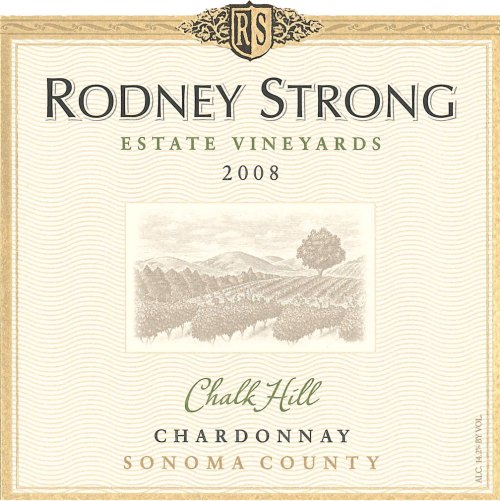
 The
The  The
The  The 2009 Big House White was produced from fruit sourced at different vineyard sites throughout California. This wine is a blend of Malvasia Bianca (56%), Muscat Canelli (22%), Viognier (18%) and Rousanne (4%). This wine underwent temperature controlled fermentation prior to bottling. This offering has a suggested retail price of $9.99.
The 2009 Big House White was produced from fruit sourced at different vineyard sites throughout California. This wine is a blend of Malvasia Bianca (56%), Muscat Canelli (22%), Viognier (18%) and Rousanne (4%). This wine underwent temperature controlled fermentation prior to bottling. This offering has a suggested retail price of $9.99. The 2009 Big House Red was also produced from fruit sourced throughout California. This offering is a blend of Petite Sirah (27%), Syrah (14.5%), Montepulciano (8.6%), Barbera (8.2%), Nero d’Avola (6.4%), Tempranillo (6.1%) and a host of others in smaller and smaller quantities. This wine underwent temperature controlled fermentation. Some lots underwent malolactic fermentation and barrel aging in primarily neutral oak. This wine has a suggested retail price of $9.99.
The 2009 Big House Red was also produced from fruit sourced throughout California. This offering is a blend of Petite Sirah (27%), Syrah (14.5%), Montepulciano (8.6%), Barbera (8.2%), Nero d’Avola (6.4%), Tempranillo (6.1%) and a host of others in smaller and smaller quantities. This wine underwent temperature controlled fermentation. Some lots underwent malolactic fermentation and barrel aging in primarily neutral oak. This wine has a suggested retail price of $9.99.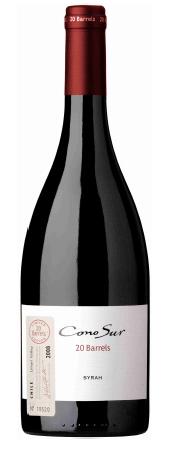 Well priced Cabernet Sauvignon is what first turned me on to Chilean wines many years ago. After discovering the great values available in that category I began to explore others as well. Over the years the other red from Chile that has most often impressed me is Syrah. There are many well priced examples coming from Chile. Stylistically they take cues from both the old and new world. Today I’ll look at a limited release Syrah from
Well priced Cabernet Sauvignon is what first turned me on to Chilean wines many years ago. After discovering the great values available in that category I began to explore others as well. Over the years the other red from Chile that has most often impressed me is Syrah. There are many well priced examples coming from Chile. Stylistically they take cues from both the old and new world. Today I’ll look at a limited release Syrah from  When you visit any wine region there are certain stops that become classics for one reason or another. In Napa Valley,
When you visit any wine region there are certain stops that become classics for one reason or another. In Napa Valley,  I recently had the opportunity to attend a tasting of Greek Wines in several different settings. Essentially it was an all day event that taught many of the attendees a lot about the wines emanating from Greece. In addition to being able to experience a broad selection of wines, I experienced a number of indigenous varietals for the first time and was generally impressed by the overall quality level. One thing stood out for me above everything else though. The wines from Santorini, which is an Island in Greece, were the ones that really struck the biggest chord with me. Today I’ll look at a Santorini wine from Boutari.
The
I recently had the opportunity to attend a tasting of Greek Wines in several different settings. Essentially it was an all day event that taught many of the attendees a lot about the wines emanating from Greece. In addition to being able to experience a broad selection of wines, I experienced a number of indigenous varietals for the first time and was generally impressed by the overall quality level. One thing stood out for me above everything else though. The wines from Santorini, which is an Island in Greece, were the ones that really struck the biggest chord with me. Today I’ll look at a Santorini wine from Boutari.
The  Today I’ll look at a couple of wines from Italian producer
Today I’ll look at a couple of wines from Italian producer 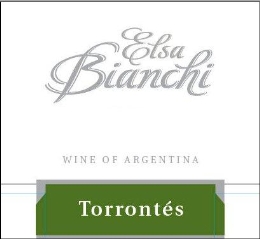 In addition to Rosé, warm weather has me longing for white wines more and more often. One of the white varietals I reach for a lot in the summer in Torrontés. In case you’re unfamiliar it’s the signature white grape of Argentina. Over the last handful of years it’s starting to make serious inroads on US shelves, both in stores and in consumer’s homes. Its appealing nature, when well made, assures it won’t spend to long on your wine rack once you do get it home. I tasted quite a few examples of this grape over the last week; here are two that I found particularly appealing.
First is the 2009 Elsa Torrontés from
In addition to Rosé, warm weather has me longing for white wines more and more often. One of the white varietals I reach for a lot in the summer in Torrontés. In case you’re unfamiliar it’s the signature white grape of Argentina. Over the last handful of years it’s starting to make serious inroads on US shelves, both in stores and in consumer’s homes. Its appealing nature, when well made, assures it won’t spend to long on your wine rack once you do get it home. I tasted quite a few examples of this grape over the last week; here are two that I found particularly appealing.
First is the 2009 Elsa Torrontés from  The second selection that stood out was the
The second selection that stood out was the  Hot and sometimes scorching weather as well as high humidity on the east coast the last few weeks has had me reaching for Rosé's to sample more often than usual.
Hot and sometimes scorching weather as well as high humidity on the east coast the last few weeks has had me reaching for Rosé's to sample more often than usual.  If you spend any time at all tasting wine in Napa Valley some things become pretty apparent quickly. One of those things is the prevalence of Cabernet Sauvignon. You’d be hard pressed to spend a day in Napa and not taste a solid handful of different cabs; if not a ton of them. The dominance of Cabernet Sauvignon in Napa is such that when I run across the occasional producer who doesn’t make one it almost makes my head turn askew. Not that I’m complaining; I love excellent Cabernet Sauvignon and Napa Valley is home to some of the best examples in the world. Today I’ll take a look at two from
If you spend any time at all tasting wine in Napa Valley some things become pretty apparent quickly. One of those things is the prevalence of Cabernet Sauvignon. You’d be hard pressed to spend a day in Napa and not taste a solid handful of different cabs; if not a ton of them. The dominance of Cabernet Sauvignon in Napa is such that when I run across the occasional producer who doesn’t make one it almost makes my head turn askew. Not that I’m complaining; I love excellent Cabernet Sauvignon and Napa Valley is home to some of the best examples in the world. Today I’ll take a look at two from  With the summer in full gear and 4th of July upon us, we’re right in the middle of Rosé season. These days there are excellent versions coming from most of the world’s major wine producing regions. That aside for a moment, there is something to be said for how seriously Rosé is treated in France. Their love affair with Rosé goes back generations. Thankfully we’re starting to catch up in the US. Today I’ll look at current release from Paul Jaboulet.
The
With the summer in full gear and 4th of July upon us, we’re right in the middle of Rosé season. These days there are excellent versions coming from most of the world’s major wine producing regions. That aside for a moment, there is something to be said for how seriously Rosé is treated in France. Their love affair with Rosé goes back generations. Thankfully we’re starting to catch up in the US. Today I’ll look at current release from Paul Jaboulet.
The  When was the last time you had a glass of Carignane? If the answer is that you never have, I’m not surprised. More often than not, this varietal ends up blended with other grapes. Sometimes it’s a serious player in an overall blend, other times it plays a supporting role in a varietal wine of another type. On occasion it’s bottled by its lonesome and the results do vary, but when the conditions and the winemaking are right a lovely wine can result. Today I’ll look at
When was the last time you had a glass of Carignane? If the answer is that you never have, I’m not surprised. More often than not, this varietal ends up blended with other grapes. Sometimes it’s a serious player in an overall blend, other times it plays a supporting role in a varietal wine of another type. On occasion it’s bottled by its lonesome and the results do vary, but when the conditions and the winemaking are right a lovely wine can result. Today I’ll look at  I recently took part in a virtual tasting and had the opportunity to sample a number of Sauvignon Blanc’s from Chile. It was an interesting concept, eight winemakers in one room in Santiago Chile, a sommelier hosting from New York City and wine writers at home, all connected via web conference and tasting the same wines. I’d had tons of Chilean Sauvignon Blanc prior to this tasting, but sampling them side by side was illuminating. It showed off not only the variety of climates and terroir but also a host of winemaking styles. Each Sauvignon Blanc we tasted was pretty distinct. What follows are my impressions of the four that stood out to me.
First up is the
I recently took part in a virtual tasting and had the opportunity to sample a number of Sauvignon Blanc’s from Chile. It was an interesting concept, eight winemakers in one room in Santiago Chile, a sommelier hosting from New York City and wine writers at home, all connected via web conference and tasting the same wines. I’d had tons of Chilean Sauvignon Blanc prior to this tasting, but sampling them side by side was illuminating. It showed off not only the variety of climates and terroir but also a host of winemaking styles. Each Sauvignon Blanc we tasted was pretty distinct. What follows are my impressions of the four that stood out to me.
First up is the 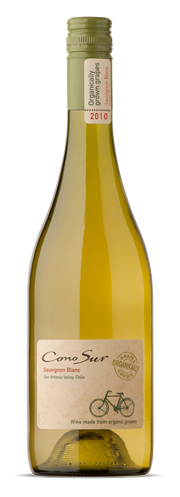 The third wine I really enjoyed was the
The third wine I really enjoyed was the 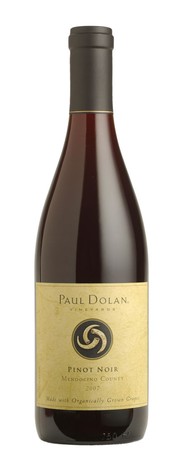 Pinot Noir has notoriety for many reasons. Not the least of these is that it’s one of the most difficult, if not the most difficult, grapes to grow. Part of that is due to the fact that it’s not always planted in the right spot. For years California suffered from Pinot planted in locations that were not suited to it. Of course that still goes on, to a degree, but I think the knowledge base on where to plant and grow excellent Pinot Noir has increased significantly in the last 20 years or so. One less discussed area of California that has been turning out some good Pinot Noir is Mendocino. Today I’ll look at an example from
Pinot Noir has notoriety for many reasons. Not the least of these is that it’s one of the most difficult, if not the most difficult, grapes to grow. Part of that is due to the fact that it’s not always planted in the right spot. For years California suffered from Pinot planted in locations that were not suited to it. Of course that still goes on, to a degree, but I think the knowledge base on where to plant and grow excellent Pinot Noir has increased significantly in the last 20 years or so. One less discussed area of California that has been turning out some good Pinot Noir is Mendocino. Today I’ll look at an example from 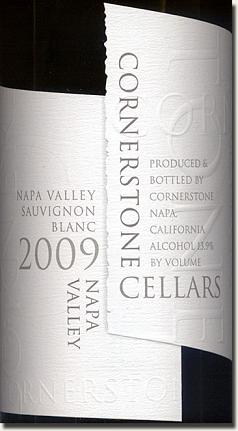
 Napa Valley takes its place amongst the great sources in the world for Cabernet Sauvignon. In all the great Cabernet regions there is excellent wine to be had; these are made in many styles with varying intents. Today I’m going to look at the current release of a Napa Valley standby from
Napa Valley takes its place amongst the great sources in the world for Cabernet Sauvignon. In all the great Cabernet regions there is excellent wine to be had; these are made in many styles with varying intents. Today I’m going to look at the current release of a Napa Valley standby from